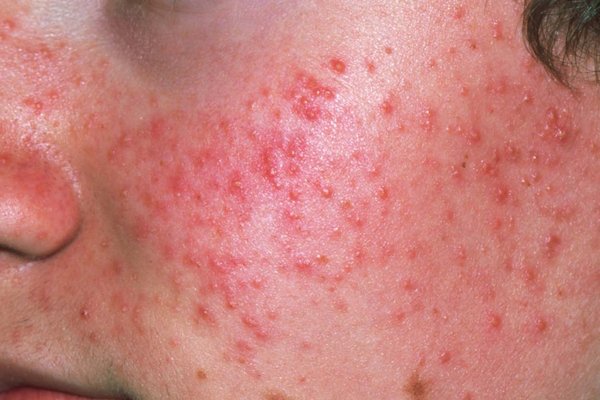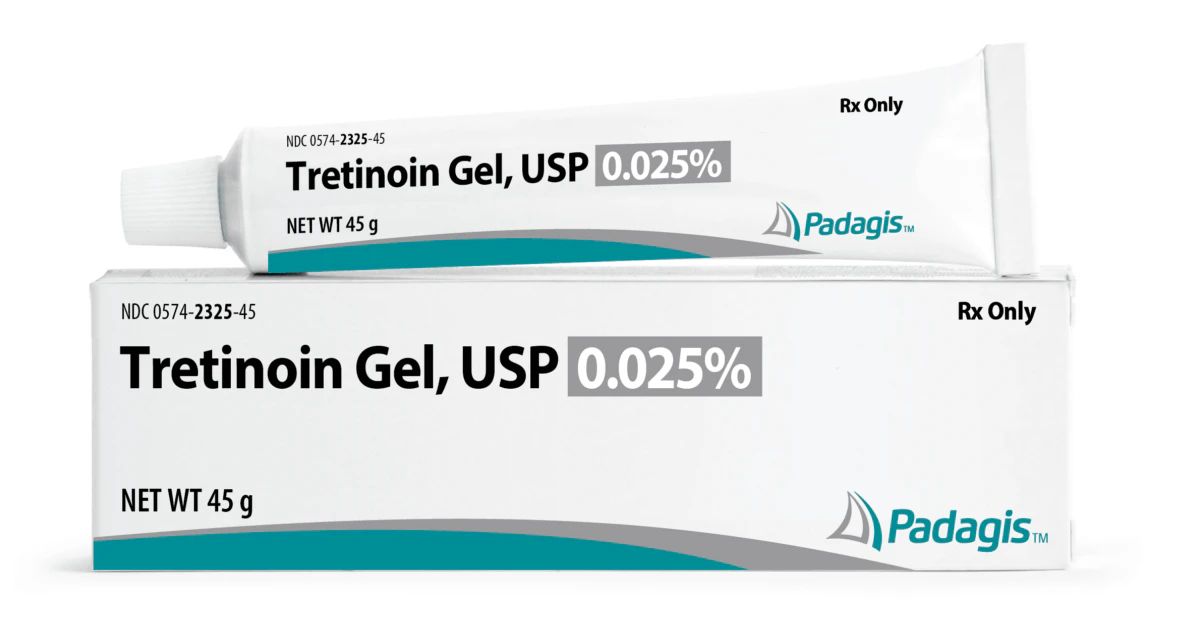Yeah, I know. You’re probably scrolling at 2 a.m., staring at a breakout, wondering if tretinoin cream 0.025% is actually going to help — or just wreck your skin even more.
Been there. I have. And honestly? I wish someone had just sat me down and said, “Look, it’s going to get messy… but it gets better.”
So that’s what we’re doing today. No fluff. No hype. Just real talk about tretinoin cream 0.025% — how it works, how to use it without burning your face off, and whether it’s worth the price tag.
Let’s get into it.
What It Is
Tretinoin cream 0.025% isn’t some miracle potion. It’s a prescription retinoid — a souped-up version of vitamin A — that tells your skin cells to behave.
It’s one of the milder strengths out there, which makes it perfect if you’re new to retinoids or your skin screams at everything. It comes in a creamy base, so it’s less drying than the gel version. Think of it like the gentle older sibling in a family of strong-willed skincare products.
It’s FDA-approved for treating acne — specifically mild to moderate acne vulgaris. But a lot of dermatologists also prescribe it off-label for fading dark spots, smoothing texture, and softening fine lines. Not because it’s magic, but because it speeds up cell turnover. Dead skin cells get pushed out faster. Fresh ones come in. Pores stay clear. Skin looks brighter.
And get this — in a clinical trial, people using tretinoin 0.025% saw a 46% reduction in total acne lesions after 12 weeks. The placebo group? Only 28%. That’s not placebo energy — that’s real progress according to DailyMed.
Why It Works
So how does it actually do all this?
Well, tretinoin loosens the “glue” that holds dead skin cells together inside your pores. Less glue = fewer clogged pores = fewer breakouts.
It also ramps up cell turnover. Your skin naturally renews itself every 28 days or so. But as we age or deal with acne, that process slows. Tretinoin revs it back up. It’s like hitting fast-forward on your skin’s reset button.
And over time? It can stimulate collagen — the stuff that keeps skin plump and smooth. That’s why people talk about tretinoin cream before and after photos showing smoother, younger-looking skin. It’s not instant, but it’s real.
Here’s the cool part: even though you’re putting it on your face, barely any of it gets absorbed into your bloodstream. Studies show less than 0.3% of the dose is bioavailable based on pharmacokinetic research. So it’s working right where you need it — on your skin — without flooding your system.
How to Use It
Okay, here’s where most people mess up.
You do not slather it on like moisturizer. You don’t use it twice a day. And you definitely don’t combine it with every exfoliant in your bathroom cabinet.
Start slow. Like, really slow.
Here’s what I recommend — and what most dermatologists suggest:
- Wash your face with a gentle cleanser.
- Pat dry — and wait 20–30 minutes. Seriously. Damp skin = more irritation.
- Use a pea-sized amount for your whole face. No, really — a pea.
- Apply it in a thin layer with your fingertips.
- Avoid the eyes, lips, and corners of the nose.
- Start 2–3 nights a week, then build up to every night as your skin adjusts.
And if your skin freaks out? That’s normal. You might feel warmth, stinging, or see redness and flaking. That’s called “retinization” — your skin learning how to handle the product.
My first month? My face looked like I’d been windburned. But I kept going — gently — and by week 8, my breakouts were shrinking and my texture was smoother.
Side Effects

Let’s be real: tretinoin isn’t all sunshine and rainbows.
Common side effects in the first few weeks include dryness, peeling, redness, and a little burning. Some people even see their acne get worse before it gets better — that’s purging, not failure.
But here’s the line: if you’re dealing with blistering, swelling, or your skin is cracking — stop. That’s not purging. That’s your skin saying, “Hey, back off.”
And sun sensitivity? Oh, it’s real. Tretinoin makes your skin way more vulnerable to UV damage. So sunscreen isn’t optional — it’s mandatory. SPF 30+, every single day, even if it’s cloudy.
If you get sunburned, stop tretinoin until your skin heals. Your skin’s already stressed — no need to add fire to the flame.
Cream vs Gel
You’ve probably seen both — tretinoin cream and tretinoin gel. So what’s the difference?
The gel is alcohol-based, lightweight, and best for oily or acne-prone skin. But it can be harsh — drying, stinging, irritating for sensitive types.
The cream? It’s in a moisturizing base. So it’s gentler, less irritating, and better if your skin tends to get dry or flaky.
| Cream (0.025%) | Gel (0.025%) | |
|---|---|---|
| Base | Hydrating, oil-in-water | Drying, alcohol-based |
| Ideal for | Dry or sensitive skin | Oily or resilient skin |
| Irritation level | Lower | Higher |
If you’re just starting out, the cream is usually the smarter choice. You can always switch to gel later if you need something stronger.
0.025% vs 0.1%
Now, what about tretinoin cream 0.1%?
That’s the big brother. Stronger. Faster results — but way more irritating.
I tried 0.1% once. Big mistake. My skin peeled for two weeks straight. I looked like a lizard.
Most experts say you don’t need the highest strength to see results. In fact, 0.025% is often more effective long-term because people actually stick with it.
Stronger doesn’t always mean better. Consistency does.
Where to Buy
Let’s clear this up: there is no over-the-counter tretinoin.
No matter how many times you Google “where to buy tretinoin cream over the counter,” it’s not legal in the U.S. without a prescription. Some websites might claim otherwise — but that’s sketchy at best.
To get it, you need a prescription. That means seeing a dermatologist, your primary doctor, or using a telehealth service like Curology or Apostrophe.
Those online platforms? They’re legit. You fill out a skin quiz, send photos, and a licensed provider prescribes a custom formula — often including tretinoin. Monthly cost? Around $10–$30. Way cheaper than brand-name Retin-A.
Tretinoin Cream Price
Speaking of cost — yeah, it can add up.
If you’re buying the brand name (like Retin-A), you’re looking at $150–$300 for a 30g tube. Ouch.
But the generic version? Way more affordable. Depending on your pharmacy and insurance, it can be as low as $50–$120. With insurance, sometimes even $10.
Pro tip: always ask for the generic. Same active ingredient, same strength, same results — just without the fancy packaging.
What to Expect
So what does real progress look like?
Here’s a rough timeline:
- Weeks 1–4: Purging, dryness, maybe some redness. Skin feels tight. You’ll want to quit.
- Weeks 5–8: Flaking starts to calm. Breakouts begin to clear. You notice fewer new pimples.
- Weeks 9–12: Skin looks brighter. Texture improves. Dark spots start to fade.
- 3–6 months: Real changes. Smoother, clearer, more even skin.
It’s not instant. But if you stick with it — and protect your skin — the results can be life-changing.
I remember looking in the mirror at month 3 and realizing I hadn’t had a cystic pimple in weeks. My skin wasn’t perfect — but it was mine. And it finally felt under control.
Safety First
A few important things:
If you’re pregnant or nursing, talk to your doctor before using tretinoin. It’s in pregnancy category C — meaning animal studies show risk, but human data is limited. Better safe than sorry.
If you have eczema or rosacea, tretinoin can make it worse. Use with caution — or skip it altogether.
And never, ever mix it with harsh scrubs, acids, or strong cleansers. Let your skin breathe. Build up tolerance. Be kind to it.
Oh, and storage: keep it in a cool, dry place. Not in the bathroom — the steam and heat can break it down. A drawer in your bedroom is better.
Final Thoughts
Look, tretinoin cream 0.025% isn’t for everyone.
If you want quick fixes, if you can’t handle a few rough weeks, or if you won’t wear sunscreen — it’s probably not for you.
But if you’re ready to commit? If you want real, lasting change in your skin? This might be the closest thing to a game-changer you’ll find.
It’s not flashy. It doesn’t come in a cute bottle. But it works — slowly, steadily, and honestly.
And hey — if you’re nervous? Start slow. Talk to your doctor. Try a sample. You don’t have to go all in on day one.
Skincare is a journey. And sometimes, the best tools aren’t the loudest ones.
So what do you think? Ready to give it a shot?


















Leave a Reply
You must be logged in to post a comment.